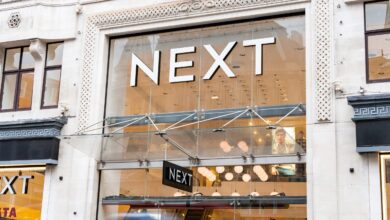2021 footfall found to be 31% lower than in 2019
Retail analysts Springboard identified that Lockdown 3 (6 January-12 April) had a “dramatic effect” on footfall across all destination types overall

Register to get 1 free article
Reveal the article below by registering for our email newsletter.
Want unlimited access? View Plans
Already have an account? Sign in
Footfall across all UK retail destinations was –31.1% lower than in 2019, but up from -39.1% in 2020, with retail parks continuing to display a “notable resilience” than either high streets or shopping centres in retaining footfall, according to Springboard’s 2021 report.
Springboard said that “it was the three month lockdown at the start of 2021 that had a severe impact on the retail sector and its recovery from 2020”. It has examined trends over two key periods: Lockdown (January to March 2021) and post Lockdown (April to December 2021).
Springboard identified that Lockdown 3 (6 January-12 April) had a “dramatic effect” on footfall across all destination types overall. The clear winners for footfall over the period were retail parks with footfall dropping -33.9% below the 2019 level compared to -69.4% in high streets and -71% in shopping centres.
Springboard said that this was mostly a result of retail parks “enabling easier social distancing as they are easy to access by car, so rely little on public transport, car parking is free, plentiful and outdoors and stores are large”.
Meanwhile, Springboard’s UK Consumer Survey identified that 57% of consumers worked at least part of the week at home in 2021, and that 24% of these consumers visited retail destinations less frequently.
As a percentage of total retail sales, online sales averaged at 30%, increasing from 27.2% in 2020. Online sales increased during Lockdown 3 to 35.7% between January and March, but fell back to 28.1% between April and December.
Springboard said that while it said 2020 was typified by “unprecedented change in retail brought about by the pandemic, and 2021 saw the start of retailers accommodating this change, 2022 will be typified by the transition of retail to succeed in a Covid world”.
It predicted that retailers can expect a “continuation of the migration of spend online to continue throughout 2022, although as consumers feel more confident with regard to the risks associated with Covid, a proportion of this will shift back to stores”.
Diane Wehrle, insights director at Springboard, said: “It is clear that whilst retailing was impacted by Covid in 2021, the roll out of the vaccine programme has been a game changer. In our review of 2020 we were forecasting that we would need to break down 2021 into two key parts – pre-vaccine and post-vaccine – and largely this is what has happened.
“With the rapid roll out of the vaccine in 2021, bricks and mortar has weathered the storm of two new variants, with footfall strengthening every month until December when the government issued Plan B guidance to work from home which took the froth off of the expected uplift in footfall and sales during the crucial Christmas trading period.”







